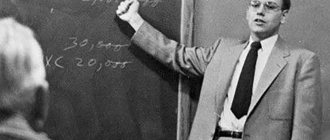In 2010, this man pushed Bill Gates, the founder and ideological inspirer of Microsoft, off the ranking pedestal of the richest people on the planet. Carlos Slim became the first Mexican to conquer the pyramidal top of billionaires. This became a sensation for world business, given the fact that over the past sixteen years it was done by a person without American citizenship.
How to be born a billionaire?
On January 28, 1940, the future Mexican businessman and philanthropist Carlos Slim Helu was born into the family of a Mexican realtor of Arab origin, Julian Slim Haddad. This was the fifth child in the family of Julian Slim Haddad and Linda Ellu Atta. The business acumen of Carlos's father, who moved from Lebanon to Mexico at the age of fourteen, quickly allowed the boy to adapt to the world of business. By the age of 30, the father of the future billionaire had several retail outlets in the business part of the capital of the Latin American state. Julian Slim passed on his management skills to his children, of whom he had six.
Childhood, youth
The future multi-billionaire was born into a Maronite family who emigrated to Mexico from Lebanon. He was the 4th child in a family of 5 children. Carlos's father owned a company that sold groceries. He taught his children how to run a business from childhood. One day, Julian Slim Haddad gave each child notebooks to record their expenses and income. Then he and the children looked through their records and analyzed the condition of each.
It is not surprising that Carlos received his first investment experience at the age of 12. Then he opened an account intended to buy shares. In 1961, Carlos graduated from the National University of Mexico with an engineering degree.
First investment lessons
Carlos Slim's success story begins at the age of seventeen. At that time, the young man, having the instincts of a stock investor, made his first million. Carlos Slim recalls his first lessons on profitable investing as follows: “My father forced each of us, his children, to keep a special notebook of income and expenses. Coming home from school, we wrote down all our expenses for the day. Father carefully reviewed the records and assessed each of us. These evening gatherings with the whole family over dinner became a real life lesson for me and my relatives. In modern terms, it was a master class.”
The recommendations of the enterprising father were heard by Carlos. The young man gets his first investment experience at the age of twelve. With the pocket money he saved, which his father gave him every day, at the age of twelve, Carlos Slim bought shares in Banco Nacional de Mexico, the second largest bank in Mexico after BBVA Bancomer.
Carlos Slim: biography of the future billionaire
Slim continues to invest money in profitable businesses, while still managing to study at the National Autonomous University of Mexico at the Faculty of Civil Engineering. The student’s extraordinary abilities were appreciated by the university leadership. In his last year, Carlos Slim (photo can be seen in the article) was recommended by the university administration to teach linear programming and algebra to junior students at the university.
However, having received a higher education diploma from the National Autonomous University of Mexico in 1961, Carlos Slim did not work in the engineering specialty he received at the university; he was attracted by investments.
The birth of a financial empire
Carlos Slim begins his career as a stockbroker. Working 14 hours a day, in 1965 he managed to make a profit from private investments of 400 thousand dollars. This inspires Carlos to take on larger projects. This is how a brokerage appears, which becomes the foundation for creating a large family business.
In 1966, the future billionaire by the first letters of the name Slim Ellu and his wife Sumaya Domit Gemayel organized the real estate agency “Inmobiliaria Carso”. A successful commercial project quickly brings the necessary profit and becomes the financial basis for creating the future Grupo Carso empire. At the end of the 60s, Carlos Slim's financial fortune reached just over $50 million.
Carlos Slim: biography of the 70s
Thanks to smart investing, Carlos Slim's financial well-being is growing every year. By 1972, he acquired seven more enterprises, mainly production of construction equipment. In 1976, Slim became the owner of a 60 percent stake in Galas de Mexico, a small printing house that produces cigar boxes.
The investment in the project is one million dollars. Within four years, the entire production of the Galas de Mexico company belonged to him. The focus of Carlos Slim's growing business in subsequent years was:
- production of non-ferrous metals;
- airlines;
- industrial and civil construction;
- chemical and pulp and paper industry;
- insurance investment.
Carlos Slim Helu is taking over the world
At the same time, the future richest man in the world realizes that it is becoming difficult for him to conduct business within Mexico alone and decides to enter the international market.
Grupo Carso becomes a public company with an initial public offering (IPO). That is, anyone has the opportunity to buy part of the company, becoming its shareholder.
In the 2000s, Carlos Slim Helu's corporation expanded its influence in the telecommunications sector. The corporation's main assets are shares in the Latin American consortium of mobile operators America Movil, as well as in the financial company Inbursa.
From 2000 to 2007, Señor Helu continued to buy up telecommunications companies throughout Latin America. He buys assets in Brazil, Peru, Honduras, Argentina, Colombia, and El Salvador.
In 2008, Slim acquired small holdings in Citibank and The New York Times. It was reported that the businessman invested in assets that were in crisis or undervalued, established business there and resold them later.
Master of Telecommunications
In the early 90s, Carlos Slim significantly increased his capital. Mexico privatizes its telecommunications industry, and acquires Telmex from the Mexican government. Then there was a major deal with the acquisition of a controlling stake from. Gradually, Grupo Carso is gaining momentum, and from a company known only to Latin America is growing into a global brand. The further chronology of events is also impressive:
- 1991 Acquisition of Hoteles Calinda, which eventually became the Ostar Grupo Hotelero holding company.
- 1993 Increases its portfolio with large shares in General Tire and Grupo Aluminio.
- 1996 Slim's company is divided into three large holdings: Carso Global Telecom, Grupo Carso and Invercorporación.
- 1997 Becomes the owner of the largest industrial productions: Procter & Gamble Co., Apizaco, Pampys. The successful acquisition of all three companies costs Slim $170 million.
The secret weapon of the richest man in the world
In the early 1990s, Slim made a major deal during which he acquired the country's largest monopolist, the telecommunications company Telmex (Telefonos de Mexico).
This event may not make much of an impression on some readers, but if you find out about the financial details of the deal, you will probably ask the question “How did he do it?”
The fact is that Carlos Slim managed to buy this company for 400 million dollars while it was valued at more than 12 billion.
This deal caused a wide public outcry, prompting mass proceedings with the highest officials of the state, including the president of the country. These proceedings ended in nothing.
And here it is worth mentioning the ability of the richest man in the world to make and maintain useful contacts . In particular, he maintained contacts with and was a sponsor of the political party PRI, which was headed by the now former President of Mexico Carlos Salinas.
It was this cooperation that allowed Carlos Slim El to provide the best conditions for his business for many years.
America is ahead!
In 1999, Carlos Slim's gaze turns towards the United States of America. Expanding his business interests beyond Latin America, the billionaire is targeting overseas investments from his northern neighbor. Soon, Carlos Slim achieves some success and becomes a prominent figure on the American business scene.
In 2002, the famous Forbes magazine included him in the list of billionaires, estimating Carlos Slim's total fortune at $11 billion. Since 2003, he has managed to buy large blocks of shares in a number of large American retailers. In 2006, behind only Warren Buffett and Bill Gates, Carlos Slim came in third place with a capital of $30 billion.
Within a year, Carlos becomes the richest man on earth. Today his fortune is estimated at $81.5 billion, which allows him to maintain the world championship among the world's moneybags.
Personal life
The billionaire was happily married for 32 years. His only love was Soumai Domit Gemayel, a girl of Lebanese origin and cousin of the former President of Lebanon. The wife has been involved in charity work all her life. The main idea of her life was to create a legal framework for organ donation, a project that was financed by Carlos Slim. Family meant a lot to the Mexican tycoon.
He believed that a successful marriage makes a person strong and independent, just like money. Unfortunately, everything has an end. In 1999, his wife passed away; in the same year, Carlos Slim underwent complex heart surgery to bypass the coronary vessels. The main thing that Sumai Domit Gemayel and Carlos Slim managed to do in this life were their children: Carlos, Marco Antonio, Patrick, Sumaya, Vanessa and Johanna.
Slim's fortune gave birth to a business empire in the family. Today, the company's shares are acquired not only on behalf of Carlos Slim, but also from his children. His three eldest sons hold key positions in the Carso group of companies.
Telecommunications business and other endeavors of Slim. Transfer of business to sons
In 1996, Telmex and Slim's other telecommunications assets were transferred to a separate holding company, Carso Global Telecom. This area was constantly replenished with new companies, among which the first Mexican Internet provider Prodigy is usually highlighted.
They say that Slim avoided and was even afraid of computers until the mid-1990s. To help their father, their sons gave him a laptop, and Carlos was forced to understand the gadget. The Internet made such an impression on the entrepreneur that he decided to delve deeper into this area, and this was reflected in some of the endeavors of Carso Global Telecom.
This story is often repeated by Slim’s biographers, but he himself tells little about his life, so it can only be a legend.
Slim was extremely interested in cellular operators. He moved from regional players to larger acquisitions and in 2000 pulled off a series of deals that included one of AT&T's local affiliates. At the same time, the mobile division of the America Movil conglomerate was spun off - now it is the world's fourth cellular operator in terms of the number of subscribers. Now America Movil controls almost all of Slim's telecommunications companies.
To create this direction, Slim attracted his old partners France Telecom and SBC Communications. They were joined by several more companies from the United States and a large Internet provider, Network Access Solutions, in which Telmex invested jointly with SBC.
Subsequently, Slim developed the Internet direction together with Microsoft. Together they launched the Latin American version of the MSN portal - T1msn. Thanks to him, computer sales increased in Mexico, which benefited Slim, who owned electronics stores.
In the early 2000s, Slim's activities were not limited to telecommunications. In 2000, it acquired the American computer retailer CompUSA. In addition, shares of several large chains in the United States were purchased. Someone then joked that Slim bought everything that could be bought in Mexico and switched to a nearby country.
Slim led integration not only in the United States, but also in Latin America. He acquired large stakes in mobile operators in Brazil, Guatemala, Ecuador and other countries. In 2004, Slim invested in Volaris, a low-cost Mexican airline. It has become the second largest in the country and now controls about 23% of domestic traffic.
In the 2000s, the entrepreneur gradually moved away from the direct management of the holding. There is evidence that this began back in 1997, when Slim underwent heart surgery. However, long before this, he involved his sons in the business, intending to make Grupo Carso a common business for many generations of his family. Until recently, Slim noted that he dreams of creating an entrepreneurial clan like the Rockefellers and other American dynasties.
The businessman has three sons - Carlos, Marco Antonio and Patrick. The entrepreneur raised them following the example of his father, combining theoretical studies in economics with practice in the family company. Carlos's sons were educated in Mexico to better understand the peculiarities of their native country and local business, and even their trips abroad were related only to the needs of the family business.
The post of chairman of Grupo Carso is now occupied by Carlos Slim Domit, the eldest son of Carlos Slim Helu, who is considered the most capable and charismatic heir. Carlos' brothers are not far behind him: Patrick Slim made America Movil the most profitable division of the conglomerate. Previously, he headed Sanborns and held other leadership positions in the holding, some of which he still retains.
Marco Antonio successfully headed the financial department of the conglomerate for 15 years, and then took the post of independent director at the BlackRock fund. In addition, he sits on the board of several companies within Grupo Carso.
Carlos Slim Domit
Carlos Slim's only wife died in 1999, which was a heavy blow for him. Since then, the entrepreneur has not advertised his personal life, but he is credited with relationships with several women, including the Jordanian Princess Noor.
Real estate
Where does Carlos Slim live and what does he own? The home of the Mexican billionaire is located in Lomas de Chapultepec, one of the most prestigious areas of modern Mexico City. The modest home, built forty years ago, is located near the place where Carlos spent his childhood and youth.
In addition, over the years he acquired:
- the former New York Times building on West 43rd Street;
- 11-story building on First Avenue in New York;
- 10-story building at the corner of Wilshere and Santa Monica Boulevard;
- two mansions in Detroit;
- mansion on 5th Avenue in New York, with a total area of 20 thousand square meters.
Carlos's main real estate is located in the United States of America. In May 2014, K. Slim presented to the world community his own aquarium, Inbursa, the largest in Latin America.
Charity
Slim has always been ironic about philanthropy, criticizing Warren Buffett and Bill Gates for their annual 5 percent contributions to various charitable foundations.
He said: “I am not God or Santa Claus, so that by helping the poor I can solve their problems.” Everything changed in 1999, when his beloved wife died, and Carlos himself found himself on the border between life and death. After a successful coronary bypass operation, Carlos Slim said: “I finally realized that after death I will not be able to take my billions with me.”
Today, Carlos Slim's fund has $4 billion in its account. Slim's foundation donated $100 million to the national Laptop for a Child program. The charity's idea is to provide every schoolchild in Mexico with a personal computer. Carlos also responded to US President Bill Clinton's idea of fighting poverty in Latin America.
Who is he
Carlos Slim Helu is the first person who, in recent decades, has managed to push American billionaires out of the top positions in the world rankings.
From 2010 to 2013, he was considered the richest person on the planet, beating Bill Gates himself by half a billion.
- According to media estimates, the businessman’s personal wealth is 8% of Mexico’s GDP.
- According to the latest data, Slim Elu's capital is about 50 billion dollars.
- A number of analysts call Mexico “Slimland”: not a single corner of the country can do without the services or products of Carlos’s companies.
- Along with his noisy fame, the billionaire was accused of monopolism and using government agencies for personal purposes.
In his homeland, Slim Elu is considered almost a fantastic figure. There is no other way to describe a person from a poor Lebanese immigrant family who became a great autocrat.
Recognition of merit
Carlos Slim's long entrepreneurial career has not gone unnoticed:
- 1985 Entrepreneurial Medal of Honor from the Mexican Chamber of Commerce and Industry.
- 1991 "Golden Patron" from the American Academy of Achievement.
- 1998 Order of Leopold II from the Belgian government.
- 2003-2004. "Best CEO" badge from a Latin trade magazine.
- 2008 National Order of the Cedar from the Lebanese government.
- 2011. The Hispanic Society of America honors Carlos Slim with the Sorolla Medal for his contributions to art and culture.
- year 2012. "Honorary Doctor" from George Washington University (USA).
The beginning of a great journey
Both while studying at the institute and while teaching, Carlos did not stop engaging in stock investing. You could say that this was his golden key to the doors labeled “success.” Having accumulated a significant amount, he acquired the Sanborns chain of stores and hotels. His goal was to improve the quality of goods sold and services provided, but not to make them prohibitively expensive. It must be said that he used this strategy in the future - he purchased a cheap product, made it better, and sold it at a higher price.
In 1982, an economic crisis began in Mexico. Most businessmen sought to sell their companies for insignificant amounts, so as not to go bankrupt in the future. But Carlos Slim did not act like everyone else. On the contrary, he tried to buy up all the companies put up for sale that seemed promising to him. Based on the acquired companies, he created the investment group Carso Group.
Further, ore and coal mining appeared in Carlos Slim's field of activity. He was able to bring one of the Frisco companies acquired during the crisis to a leading position among the entire mining and chemical industry.
The Carso Group holding continued to grow, and already at the end of the 1980s the number of companies in it was so high that almost every second resident of Mexico daily used one or another of the services that Carlos Slim provided to the people.











